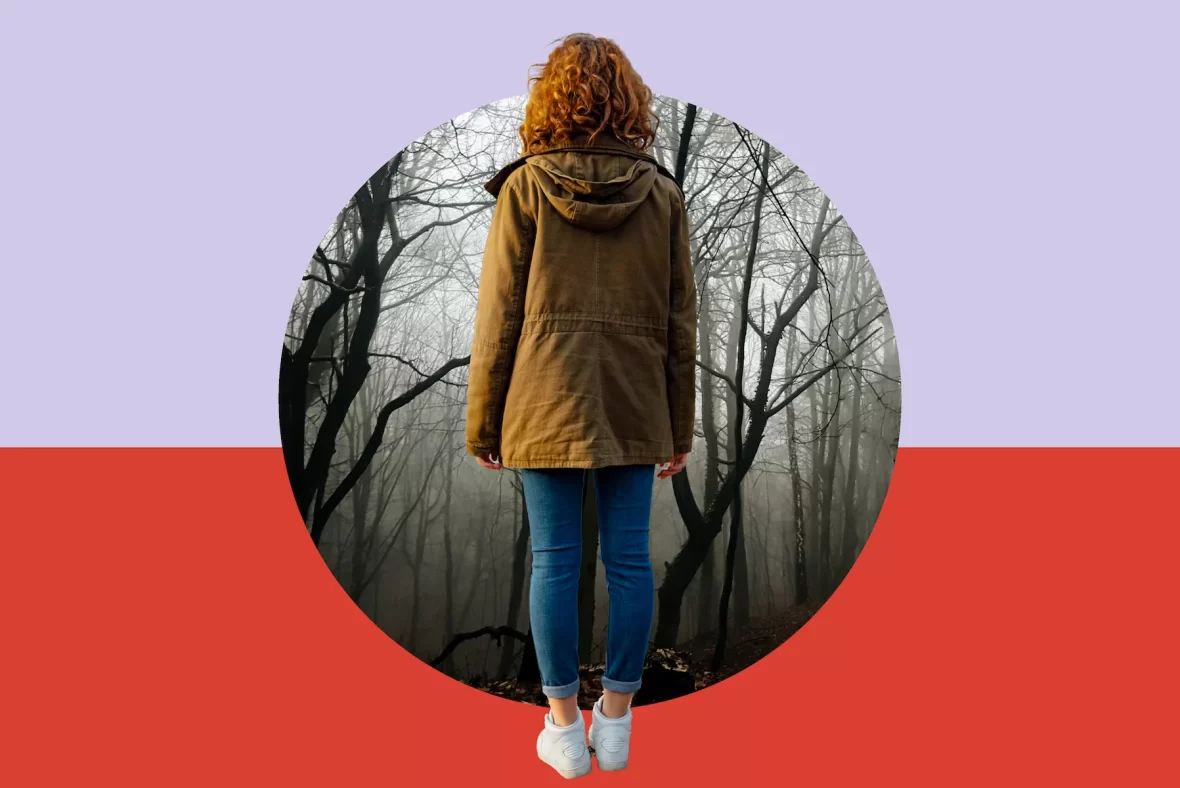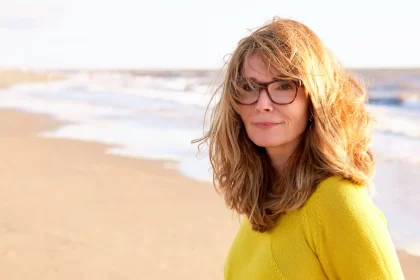There’s a “troubled teen” industry, and children, including Erica Harvey, are dying as a result. Now her family, along with victims including Paris Hilton, are using their voice for change.
Erica Harvey was a straight-A student, artist, and athlete until, in 2001, she began to struggle. Before her parents’ concerned eyes, the once bubbly and charismatic 15-year-old started flunking school and withdrawing from friendships, her graceful forearms suddenly striated with the scars of self-harm. Her parents found notes in which Erica wrote out her suicidal ideation. And in early 2002, she was expelled from her Phoenix high school after being discovered smoking marijuana in a campus bathroom.
From the earliest signs of trouble, Erica’s parents worked to get her help: a series of therapists, case workers, an inpatient adolescent psychiatric unit stay. She was diagnosed with bipolar disorder, began taking medication to treat it, and was admitted to a new school. But the cutting continued, the drug use escalated, and Erica began implying she wanted to drop out.
“That was just unfathomable to us,” says Cynthia Clark Harvey, Erica’s mother. “And then it was suggested by a new psychologist that at the end of the school year we needed to hit some sort of reset button. Ironically, things had gotten better; she wasn’t actively suicidal. And that’s when her counselor handed us information on wilderness programs.”
The Harveys spent months carefully researching these wilderness therapy programs for “troubled teens,” ruling out ones that seemed overtly religious or strict, and disqualifying programs with no clinical aspect to manage Erica’s medications.
“There’s something uniquely American about embracing nature, about finding awe and renewal in the outdoors, about wanting that experience for your children,” says Clark Harvey. “We envisioned her attending for three weeks, regrouping, returning to school in the fall, possibly even an online school. We wanted to believe they had an answer, that it was a simple solution to an extremely complex problem.”
Free Mental Health Resources for Families
She and her husband felt certain they had done adequate research to find the right program for their daughter. “In hindsight—and I assure you, there is no limit to our amount of hindsight—we failed to connect some critical dots,” adds Clark Harvey.
Taking a short flight to Nevada, the Harveys delivered Erica to the doors of Catherine Freer Wilderness Therapy Expeditions. Erica hugged her younger sister, then told her parents she hated them.
“And that would be the last thing I heard from her.”
:max_bytes(150000):strip_icc():format(webp)/Unknown-622a134852394689b3fba91cad25ee76.jpeg)
Lasting Scars for Survivors
A network of private youth programs, therapeutic boarding schools, residential treatment centers, religious academies, wilderness programs, and drug rehabilitation centers all operate on a profitable rubric loosely termed the “troubled teen industry.” Typically run by private companies, nonprofits, or faith-based groups, they are marketed to parents of teenagers experiencing behavioral problems, mental health struggles, substance abuse, learning disorders, and even shifting sexual orientation or gender identity (experts have called conversion therapy programs extremely harmful). The programs universally pledge to reverse adolescent “maladaptive behaviors.” Activists including Paris Hilton are now speaking out about the dangers of these programs.
There are up to 200,000 minors in congregate care facilities, according to Breaking Code Silence, an initiative organized in 2014 by survivors and activists to raise awareness of the troubled teen industry. They are placed there from foster care and juvenile justice systems, school districts, mental health providers, refugee resettlement agencies, or by their parents. In some experiences, teens are brought to these programs by caregivers, while in other circumstances they are removed from their homes by force and against their will by program staff. Breaking Code Silence maintains an up-to-date map of operating troubled teen programs and counts more than 5,000 such U.S. facilities.
Concern over these programs isn’t new. In 2008, the U.S. Government Accountability Office (GAO) released a report examining abuse and deaths in these private residential programs. More recently, countless young people who were placed in these programs report they are rife with emotional and physical abuse, practices that generate a lifetime of trauma. The hashtag #BreakingCodeSilence, dedicated to drawing attention to the troubled teen industry, currently has more than 475 million views on TikTok. There, survivors who were dispatched to such programs to “heal” from sexual trauma or mental health problems, detail their experiences. One TikTok user describes being forced to submit to a blindfolded massage. Another recalls leaving her wilderness facility when she was 14 to go to a clinic in which multiple staff members had to stay in the room as a doctor performed a painful pelvic exam, an experience she reports has given her a lasting phobia of OB-GYNs.
Casting further light on the industry, Paris Hilton, 41, spoke to lawmakers and rights advocates at an October 2021 event in Washington D.C. calling for safeguarding kids and industry-wide reform. The advocacy follows the 2020 release of her YouTube documentary This Is Paris, in which the star recounts her abusive experience at Utah’s Provo Canyon School. Hilton has spoken publicly about being choked, spied on while showering, and being locked in solitary confinement—and says she has suffered severe post-traumatic stress from the experience. She continues to bring attention to these places, including on her recent reality show, Paris in Love, and on her social media channels, such as in a new TikTok video documenting her fight for change and saying she will never stop using her “voice and platform to end institutional abuse.”
In 2021, former New York Times reporter Kenneth R. Rosen also released Troubled: The Failed Promise of America’s Treatment Programs, a searing exposé of these congregate care facilities for at-risk youth. Rosen himself is a survivor of such programs. “Most children emerge scarred from the experience and that trauma, compounded by the restrictions of the programs themselves and any preexisting (or undiagnosed) conditions,” Rosen said via email. (Research also shows that boot camp-type settings are hardly successful in the long-term and rarely reduce recidivism.)
“As for my own personal impact,” adds Rosen, “I live with a constant reminder that I could be taken by anyone for any reason at any moment.”
Teens Are in a Mental Health Crisis—Here’s How Parents Can Help
https://www.parents.com/embed?url=https%3A%2F%2Fwww.instagram.com%2Fp%2FCVMAYsvvkSB&id=mntl-sc-block_1-0-34-iframe&options=e30%3D&docId=6743508
A Long and Dangerous History
While the industry may be under the microscope today, the tough love approach snakes back decades. In 1958, recovered alcoholic Charles Dederich created Synanon, initially a drug treatment program. But the program, which became a multi-million-dollar business, used troublesome tactics—including sleep deprivation and isolation—along with “healing” sessions that would turn violent. In the 1970s, the group morphed into the Church of Synanon, dubbed one of the “most dangerous and violent cults America had ever seen,” before running into legal issues, losing its tax-exempt status, and closing in 1991.
But some of its adherents and supporters went on to open their own programs, frequently applying the group’s worst tendencies, according to Los Angeles Magazine. Some of these offshoots, including Straight Inc. and The Seed, specifically targeted youth. Although many of these places have been shuttered following legal battles and federal investigations, similar programs litter the nation’s adolescent behavioral health landscape.
It’s a lucrative industry, one that generates billions of dollars annually. While private insurance may cover some costs, parents often pay thousands, sometimes tens of thousands, of dollars per month to send their children to congregate care. To send their kids to these programs, parents are encouraged to take out loans, refinance their homes, or sell their assets to cover fees that can total more than $150,000.
Through her family experience, Clark Harvey confidently says the industry preys on desperate parents and their children in need of help. “I remember being a teen and how painful that was, but Erica’s level of distress completely eclipsed my own experience and I felt completely inadequate and that I had failed completely as a mother, and this industry told me that I was right about those fears,” she says.
One Family’s Devastating, Preventable Loss
Having left Erica at Catherine Freer Wilderness Therapy Expeditions, the rattled family set off in a rental car, seeing the sites in quaint Carson City, Nevada, then taking a boat ride on Lake Tahoe. “It was important to us,” says Clark Harvey. “Erica had a 13-year-old sister who was also enduring the situation because for so long Erica had been sucking up all the air in the room.”
What took place the following day during Erica’s first full day of the program has been covered in police and medical reports. Clark Harvey has also testified before Congress in 2007.
That morning, Erica and other kids set out with group leaders on a wilderness hike. Reports explain Erica was fine and was even moving ahead of the group, but by 6 p.m., she was acting strange. Her eyes then rolled back in her head, she stumbled off the trail, and landed face down into a rocky ravine, as Phoenix New Times reports.
The staff, reports say, thought she was pretending. Eventually, someone checked her pulse and began CPR. More than 45 minutes later, someone called for medical help, but it would be hours before they’d arrive because the staff gave the wrong coordinates to a search-and-rescue team. Later, it emerged the staff EMT was inexperienced and staff members present didn’t have experience working with kids on psychotropic medication.
Five hours after Erica collapsed, her temperature was still 101.7 degrees and the official cause of death was heatstroke and dehydration.
In Phoenix, the Harveys were in the yard when the call came in. The parents fell to the ground, the neighborhood pierced through with their screams.
:max_bytes(150000):strip_icc():format(webp)/Unknown-1-ce3862969ec14b8980771f06a7abd95a.jpeg)
Why Do These Programs Continue To Exist?
Erica’s death isn’t the only one. Between 2000 and 2015 alone, more than 80 children are known to have died in “troubled teen” programs, spurring activists like Hilton to call on Congress to establish a federal “bill of rights” for youths in congregate care, as well as standards for reporting systems.
So, how do these programs remain afloat? Lack of regulation on privately owned or privately funded, as well as religious facilities, plays a big role.
Certain states are more industry-friendly allowing programs claiming to be religion-based to evade state rules governing secular boarding schools. That’s the case in Missouri, Montana, Arkansas, and several other states, which have gaps in oversight and licensing exemptions for religious institutions, according to an NBC and Dateline investigation. And in more than a dozen states, boarding schools are also exempt from licensing requirements if they are privately owned or funded.
“The problem is a lack of federal oversight of the programs and inaction or ignorance at the state level,” says Troubled author Rosen. “States are limited by laws that govern adult facilities and state- or federally-funded institutions. But a lot of the programs are private, for-profit centers which don’t always necessarily meet the same reporting guidelines.”
Plus, these programs can be very convincing. “They’ve gotten better about using the language of evidence-based outcomes,” says Clark Harvey, pointing out that Catherine Freer Wilderness Therapy Programs was founded in 1988 by Robert Cooley, a Ph.D. level psychologist. She adds, “The program was the first of the really good ones to model a lot of medical language. They were sophisticated at the language they used and did a good job making us believe this was a very soundly therapeutically oriented program. And we were bamboozled.”
A few years after Erica’s death, the Harvey family filed a civil suit against Catherine Freer Wilderness Therapy Expeditions alleging wrongful death, fraud, and a tort of outrage. Discovery in the suit brought into sharp focus each detail that led to Erica’s death.
“We wanted information, and the DA was reluctant to prosecute,” says Clark Harvey. “But also, it had been years, and we were exhausted.” The Harveys settled with the company, with the caveat that the family could continue to openly discuss the facts of the case. “They would never be as punished as I wanted them to feel. What mattered most to us was to continue to make Erica’s story known to the world.”
Depression in Kids: How to Recognize Symptoms and Get Treatment
https://www.parents.com/embed?url=https%3A%2F%2Fwww.instagram.com%2Fp%2FCVQhkImp5km&id=mntl-sc-block_1-0-76-iframe&options=e30%3D&docId=6743508
Saving Children From Future Abuse
Rosen says he’s been encouraged by many recent initiatives regarding the troubled teen industry oversight at the state and federal levels, including an October 2021 report by the National Disability Rights Network outlining next steps on the federal, state, and facility levels.
“I’ve seen interest in these programs rise and fall over the last decade,” Rosen adds. “But perhaps with continued pressure from social media accounts sharing stories of abuse and neglect at the programs, the momentum can be sustained.”
It’s also critical that support from Congress does not waver in order to achieve greater regulation over the programs. Introduced in October 2021, the Accountability for Congregate Care Act—co-sponsored by Rep. Ro Khanna—is legislation that will create the “bill of rights” for youth Hilton advocates for, as well as national standards that programs need to meet.
If passed, laws like these can make all the difference. “Enacting laws which make it difficult for programs to open without proper credentialing, without proper psychiatric services, without trained staff, which deploy non-evidence-based treatments, would just as soon shutter most programs as it would lay the groundwork for programs which offer care to children who actually need it,” explains Rosen.
Clark Harvey calls for nothing short of a complete dismantling of the industry, one she believes cravenly preys on vulnerable families at their most desperate hour. She’d like to see it replaced with a nationwide medical model that meets the specific needs of adolescent mental health care. Erica’s in-patient treatment was necessary, she says, but no child should be treated for a mental health crisis outside a licensed clinical setting.
And after years of having ceased to speak to journalists about Erica’s story—years of finding it both draining and futile—Clark Harvey is again finding her advocacy voice.
“I give props to Paris Hilton and all the other activists posting about their experiences on social media,” she says. “Because speaking out about it can’t be easy, and they’re doing an enormous public service for other teenagers and kids whose parents are considering these programs, kids who can now go to their parents and say, ‘Watch this, and see what these places really do to kids,’ to give parents the opportunity to make a different choice.”
Published at Parents.com




